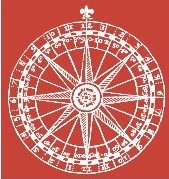Aratus’ Phaenomena beyond Its Sources
In this article, I compare the astronomical poem by Aratus called Phaenomena (third century bc) with the citations of a work of the same name by Eudoxus that are found in Hipparchus’ only extant work, In Arati et Eudoxi…
Listed in Article | publication by group Iter Community
Version 1.0 - published on 11 Sep 2023
Licensed under Creative Commons BY-NC 4.0
Forked from: Aratus’ Phaenomena beyond Its Sources v 1.0
Description
In this article, I compare the astronomical poem by Aratus called Phaenomena (third century bc) with the citations of a work of the same name by Eudoxus that are found in Hipparchus’ only extant work, In Arati et Eudoxi phaenomena (second century bc). I argue that, contrary to what most scholars maintain, Aratus’ poem is not a mere versification of Eudoxus’ work but a version enriched in style, language, and content. Indeed, Aratus’ Phaenomena is a paradigmatic reflection of the astronomical knowledge of the period in which it was written and a comprehensive, non-technical presentation of the celestial phenomena known in his time. It was, as I show, a very popular work, so popular that Hipparchus was moved to correct it in the hope of establishing himself as the authority in astronomy and prose as its proper medium.
Cite this work
Researchers should cite this work as follows:
Tags
Notes
Original publication: Mastorakou, Stamatina. "Aratus' Phaenomena beyond Its Sources." Interpretatio Series A. 2019. URI: https://jps.library.utoronto.ca/index.php/interpretatioa/article/view/32649. This material has been re-published in an unmodified form on the Canadian HSS Commons with the permission of Iter Canada. Copyright © the author(s). Their work is distributed by Interpretatio under a Creative Commons Attribution-NonCommercial 4.0 International License. For details, see https://creativecommons.org/licenses/.
Publication preview
Iter Community
This publication belongs to the Iter Community group.
When watching a publication, you will be notified when a new version is released.
